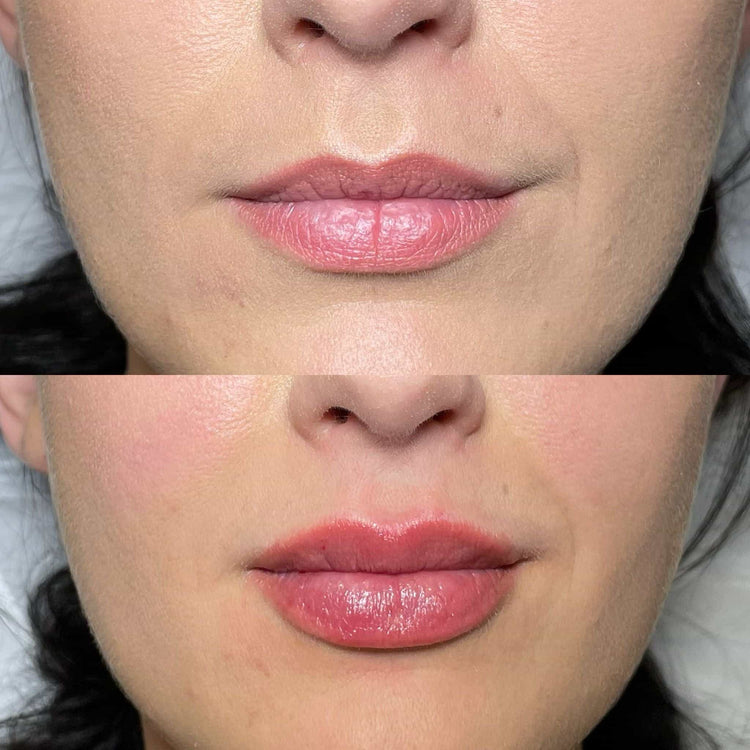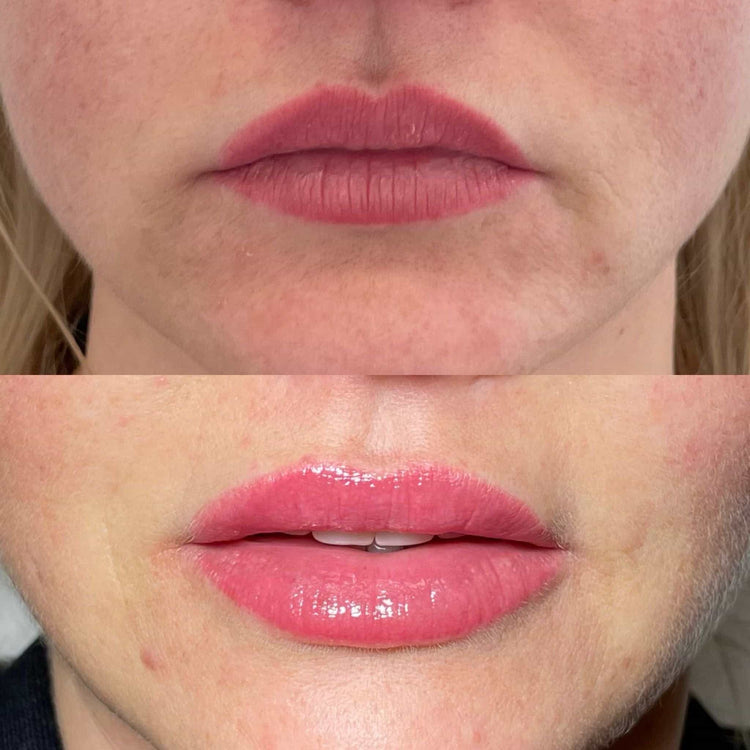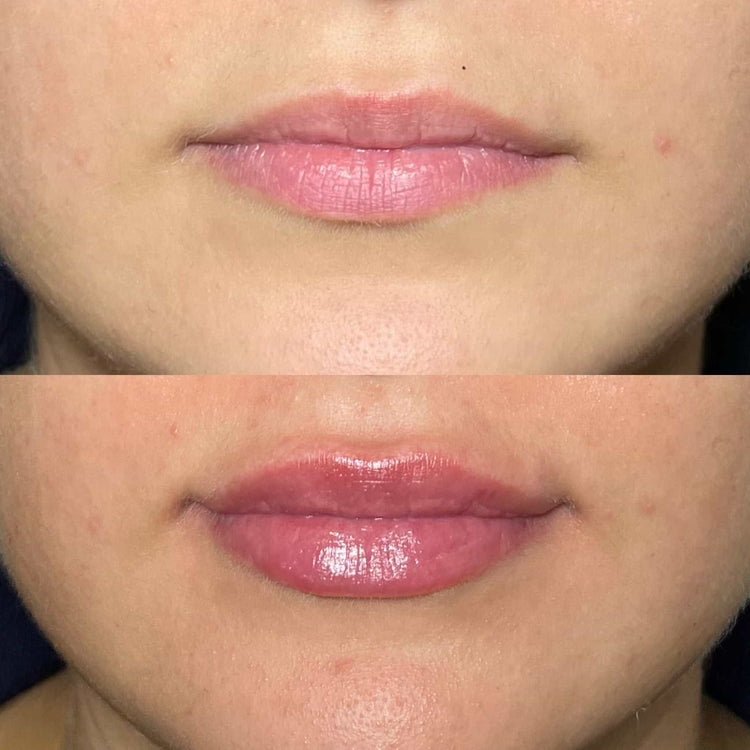Myth Busting Lip Fillers: Facts from UK Experts
Lip fillers have become increasingly popular in recent years, but many misconceptions surround their safety, effectiveness, and longevity. This article delves into some common myths about lip fillers, providing insights and evidence-based information from leading experts in the United Kingdom.
Lip Fillers Are Permanent
One persistent myth surrounding lip fillers is that they are permanent. This is simply not true. Modern lip fillers used in reputable clinics are temporary substances that naturally degrade over time. The duration of results varies depending on the type of filler and individual factors, typically lasting anywhere from 6 to 18 months.
UK-based aesthetic practitioners emphasize the importance of choosing a qualified and experienced practitioner for lip filler procedures. Using appropriately trained professionals ensures safe injection techniques and minimizes the risk of complications.
Temporary vs. Semi-Permanent Options Explained
Another common myth is that lip fillers always result in an unnatural, “duck face” appearance. This misconception stems from poorly executed procedures or using excessive amounts of filler. Skilled practitioners prioritize subtle enhancements that enhance natural features rather than drastically altering them.
Furthermore, there are concerns regarding the potential for allergic reactions to lip fillers. While allergies can occur with any cosmetic procedure, reputable clinics utilize high-quality, biocompatible materials and conduct thorough consultations to assess individual sensitivities.
Lip Filler Side Effects are Extreme and Common
A pervasive misconception is that lip filler side effects are mild and infrequent. UK experts strongly refute this claim, stating that severe and common side effects are a real concern.
Complications such as excessive swelling, bruising, infection, and even permanent tissue damage can occur if procedures are not performed by qualified practitioners or if improper materials are used.
Patients seeking lip fillers must prioritize their safety and thoroughly research potential risks before undergoing any procedure.
Common Side Effects Discussed: Swelling, Bruising, etc.
Lip fillers have become increasingly popular in recent years, but many misconceptions surround their safety, effectiveness, and longevity. This article delves into some common myths about lip fillers, providing insights and evidence-based information from leading experts in the United Kingdom.
One persistent myth surrounding lip fillers is that they are permanent. This is simply not true. Modern lip fillers used in reputable clinics are temporary substances that naturally degrade over time. The duration of results varies depending on the type of filler and individual factors, typically lasting anywhere from 6 to 18 months.
UK-based aesthetic practitioners emphasize the importance of choosing a qualified and experienced practitioner for lip filler procedures. Using appropriately trained professionals ensures safe injection techniques and minimizes the risk of complications.
Another common myth is that lip fillers always result in an unnatural, “duck face” appearance. This misconception stems from poorly executed procedures or using excessive amounts of filler. Skilled practitioners prioritize subtle enhancements that enhance natural features rather than drastically altering them.
Furthermore, there are concerns regarding the potential for allergic reactions to lip fillers. While allergies can occur with any cosmetic procedure, reputable clinics utilize high-quality, biocompatible materials and conduct thorough consultations to assess individual sensitivities.
A pervasive misconception is that lip filler side effects are mild and infrequent. UK experts strongly refute this claim, stating that severe and common side effects are a real concern.
Complications such as excessive swelling, bruising, infection, and even permanent tissue damage can occur if procedures are not performed by qualified practitioners or if improper materials are used.
Patients seeking lip fillers must prioritize their safety and thoroughly research potential risks before undergoing any procedure.
Only Certain People Can Benefit From Lip Fillers
Lip fillers have become increasingly popular in recent years, but many misconceptions surround their safety, effectiveness, and longevity. This article delves into some common myths about lip fillers, providing insights and evidence-based information from leading experts in the United Kingdom.
One persistent myth surrounding lip fillers is that they are permanent. This is simply not true. Modern lip fillers used in reputable clinics are temporary substances that naturally degrade over time. The duration of results varies depending on the type of filler and individual factors, typically lasting anywhere from 6 to 18 months.
UK-based aesthetic practitioners emphasize the importance of choosing a qualified and experienced practitioner for lip filler procedures. Using appropriately trained professionals ensures safe injection techniques and minimizes the risk of complications.
Another common myth is that lip fillers always result in an unnatural, “duck face” appearance. This misconception stems from poorly executed procedures or using excessive amounts of filler. Skilled practitioners prioritize subtle enhancements that enhance natural features rather than drastically altering them.
Furthermore, there are concerns regarding the potential for allergic reactions to lip fillers. While allergies can occur with any cosmetic procedure, reputable clinics utilize high-quality, biocompatible materials and conduct thorough consultations to assess individual sensitivities.
A pervasive misconception is that lip filler side effects are mild and infrequent. UK experts strongly refute this claim, stating that severe and common side effects are a real concern.
Complications such as excessive swelling, bruising, infection, and even permanent tissue damage can occur if procedures are not performed by qualified practitioners or if improper materials are used.
Patients seeking lip fillers must prioritize their safety and thoroughly research potential risks before undergoing any procedure.
Suitable Candidates for Lip Fillers Highlighted
Lip fillers have become increasingly popular in recent years, but many misconceptions surround their safety, effectiveness, and longevity. This article delves into some common myths about lip fillers, providing insights and evidence-based information from leading experts in the United Kingdom.
One persistent myth surrounding lip fillers is that they are permanent. This is simply not true. Modern lip fillers used in reputable clinics are temporary substances that naturally degrade over time. The duration of results varies depending on the type of filler and individual factors, typically lasting anywhere from 6 to 18 months.
UK-based aesthetic practitioners emphasize the importance of choosing a qualified and experienced practitioner for lip filler procedures. Using appropriately trained professionals ensures safe injection techniques and minimizes the risk of complications.

Another common myth is that lip fillers always result in an unnatural, “duck face” appearance. This misconception stems from poorly executed procedures or using excessive amounts of filler. Skilled practitioners prioritize subtle enhancements that enhance natural features rather than drastically altering them.
Furthermore, there are concerns regarding the potential for allergic reactions to lip fillers. While allergies can occur with any cosmetic procedure, reputable clinics utilize high-quality, biocompatible materials and conduct thorough consultations to assess individual sensitivities.
A pervasive misconception is that lip filler side effects are mild and infrequent. UK experts strongly refute this claim, stating that severe and common side effects are a real concern.
Complications such as excessive swelling, bruising, infection, and even permanent tissue damage can occur if procedures are not performed by qualified practitioners or if improper materials are used.
Patients seeking lip fillers must prioritize their safety and thoroughly research potential risks before undergoing any procedure.
- Seek out a qualified and experienced practitioner for lip filler treatments.
- Thoroughly discuss your desired outcome and concerns with the practitioner during consultations.
- Understand that individual results may vary, and realistic expectations are essential.
- Be aware of potential side effects and complications, and ask the practitioner about their protocols for minimizing risks.
- Prioritize safety and well-being by carefully researching clinics and practitioners before making any decisions.
Expensive and Unnecessary Procedure
Lip fillers have become increasingly popular in recent years, but many misconceptions surround their safety, effectiveness, and longevity. This article delves into some common myths about lip fillers, providing insights and evidence-based information from leading experts in the United Kingdom.
One persistent myth surrounding lip fillers is that they are permanent. This is simply not true. Modern lip fillers used in reputable clinics are temporary substances that naturally degrade over time. The duration of results varies depending on the type of filler and individual factors, typically lasting anywhere from 6 to 18 months.
UK-based aesthetic practitioners emphasize the importance of choosing a qualified and experienced practitioner for lip filler procedures. Using appropriately trained professionals ensures safe injection techniques and minimizes the risk of complications.
Another common myth is that lip fillers always result in an unnatural, “duck face” appearance. This misconception stems from poorly executed procedures or using excessive amounts of filler. Skilled practitioners prioritize subtle enhancements that enhance natural features rather than drastically altering them.
Furthermore, there are concerns regarding the potential for allergic reactions to lip fillers. While allergies can occur with any cosmetic procedure, reputable clinics utilize high-quality, biocompatible materials and conduct thorough consultations to assess individual sensitivities.
A pervasive misconception is that lip filler side effects are mild and infrequent. UK experts strongly refute this claim, stating that severe and common side effects are a real concern.

Complications such as excessive swelling, bruising, infection, and even permanent tissue damage can occur if procedures are not performed by qualified practitioners or if improper materials are used.
Patients seeking lip fillers must prioritize their safety and thoroughly research potential risks before undergoing any procedure.
Cost Considerations and Value Explained
Lip fillers have become increasingly popular in recent years, but many misconceptions surround their safety, effectiveness, and longevity. This article delves into some common myths about lip fillers, providing insights and evidence-based information from leading experts in the United Kingdom.
One persistent myth surrounding lip fillers is that they are permanent. This is simply not true. Modern lip fillers used in reputable clinics are temporary substances that naturally degrade over time. The duration of results varies depending on the type of filler and individual factors, typically lasting anywhere from 6 to 18 months.

UK-based aesthetic practitioners emphasize the importance of choosing a qualified and experienced practitioner for lip filler procedures. Using appropriately trained professionals ensures safe injection techniques and minimizes the risk of complications.
Another common myth is that lip fillers always result in an unnatural, “duck face” appearance. This misconception stems from poorly executed procedures or using excessive amounts of filler. Skilled practitioners prioritize subtle enhancements that enhance natural features rather than drastically altering them.
Furthermore, there are concerns regarding the potential for allergic reactions to lip fillers. While allergies can occur with any cosmetic procedure, reputable clinics utilize high-quality, biocompatible materials and conduct thorough consultations to assess individual sensitivities.
A pervasive misconception is that lip filler side effects are mild and infrequent. UK experts strongly refute this claim, stating that severe and common side effects are a real concern. Complications such as excessive swelling, bruising, infection, and even permanent tissue damage can occur if procedures are not performed by qualified practitioners or if improper materials are used. Patients seeking lip fillers must prioritize their safety and thoroughly research potential risks before undergoing any procedure.
Here are some key considerations when exploring lip filler options:
- Consultation: Schedule a thorough consultation with an experienced practitioner to discuss your goals, concerns, and medical history.
- Credentials: Verify the practitioner’s qualifications, experience, and licensing. Ensure they have specialized training in aesthetic injectables.
- Clinic Reputation: Research the clinic’s reputation, online reviews, and safety protocols. Choose a reputable establishment with a focus on patient well-being.
- Filler Types: Understand the different types of lip fillers available (e.g., hyaluronic acid-based) and discuss which is most suitable for your desired outcome and skin type.
- Cost Transparency: Inquire about pricing upfront, including potential additional costs such as consultations or touch-up appointments.
The Science Behind Lip Fillers
Lip fillers have become increasingly popular in recent years, but many misconceptions surround their safety, effectiveness, and longevity. This article delves into some common myths about lip fillers, providing insights and evidence-based information from leading experts in the United Kingdom.
One persistent myth surrounding lip fillers is that they are permanent. This is simply not true. Modern lip fillers used in reputable clinics are temporary substances that naturally degrade over time. The duration of results varies depending on the type of filler and individual factors, typically lasting anywhere from 6 to 18 months.
UK-based aesthetic practitioners emphasize the importance of choosing a qualified and experienced practitioner for lip filler procedures. Using appropriately trained professionals ensures safe injection techniques and minimizes the risk of complications.
Another common myth is that lip fillers always result in an unnatural, “duck face” appearance. This misconception stems from poorly executed procedures or using excessive amounts of filler. Skilled practitioners prioritize subtle enhancements that enhance natural features rather than drastically altering them.
Furthermore, there are concerns regarding the potential for allergic reactions to lip fillers. While allergies can occur with any cosmetic procedure, reputable clinics utilize high-quality, biocompatible materials and conduct thorough consultations to assess individual sensitivities.
A pervasive misconception is that lip filler side effects are mild and infrequent. UK experts strongly refute this claim, stating that severe and common side effects are a real concern.
Complications such as excessive swelling, bruising, infection, and even permanent tissue damage can occur if procedures are not performed by qualified practitioners or if improper materials are used.
Patients seeking lip fillers must prioritize their safety and thoroughly research potential risks before undergoing any procedure.
Types of Injectable Fillers Used in the UK
Lip fillers have become increasingly popular in recent years, but many misconceptions surround their safety, effectiveness, and longevity. This article delves into some common myths about lip fillers, providing insights and evidence-based information from leading experts in the United Kingdom.
One persistent myth surrounding lip fillers is that they are permanent. This is simply not true. Modern lip fillers used in reputable clinics are temporary substances made from hyaluronic acid, a naturally occurring substance in the body. These fillers gradually break down over time. The duration of results varies depending on the type of filler and individual factors, typically lasting anywhere from 6 to 18 months.
UK-based aesthetic practitioners emphasize the importance of choosing a qualified and experienced practitioner for lip filler procedures. Using appropriately trained professionals ensures safe injection techniques and minimizes the risk of complications.
Another common myth is that lip fillers always result in an unnatural, “duck face” appearance. This misconception stems from poorly executed procedures or using excessive amounts of filler. Skilled practitioners prioritize subtle enhancements that enhance natural features rather than drastically altering them.
Furthermore, there are concerns regarding the potential for allergic reactions to lip fillers. While allergies can occur with any cosmetic procedure, reputable clinics utilize high-quality, biocompatible materials and conduct thorough consultations to assess individual sensitivities. They will also ensure you have a test dose of the filler before your full treatment to check for any adverse reactions.
A pervasive misconception is that lip filler side effects are mild and infrequent. UK experts strongly refute this claim, stating that severe and common side effects are a real concern. Complications such as excessive swelling, bruising, infection, and even permanent tissue damage can occur if procedures are not performed by qualified practitioners or if improper materials are used. Patients seeking lip fillers must prioritize their safety and thoroughly research potential risks before undergoing any procedure.
Here are some key considerations when exploring lip filler options:
- Consultation: Schedule a thorough consultation with an experienced practitioner to discuss your goals, concerns, and medical history.
- Credentials: Verify the practitioner’s qualifications, experience, and licensing. Ensure they have specialized training in aesthetic injectables.
- Clinic Reputation: Research the clinic’s reputation, online reviews, and safety protocols. Choose a reputable establishment with a focus on patient well-being.
- Filler Types: Understand the different types of lip fillers available (e.g., hyaluronic acid-based) and discuss which is most suitable for your desired outcome and skin type.
- Cost Transparency: Inquire about pricing upfront, including potential additional costs such as consultations or touch-up appointments.
How Lip Fillers Work: Hyaluronic Acid Explained
## The Science Behind Lip Fillers: Hyaluronic Acid Explained
Lip fillers have become increasingly popular, but many people don’t understand how they work. Let’s delve into the science behind these cosmetic enhancements, focusing on the key ingredient: hyaluronic acid.
Hyaluronic acid is a naturally occurring substance in your body. It’s found in various tissues, including skin, where it plays a crucial role in maintaining hydration and elasticity. Think of it as a sponge that attracts and retains water molecules, keeping skin plump and smooth.
Lip fillers leverage this natural property of hyaluronic acid. They are made from synthetic versions of hyaluronic acid designed specifically for cosmetic procedures. These fillers are injected into the lips to add volume, definition, and fullness.
Here’s how it works:
* **Injection:** A qualified practitioner uses a fine needle to inject the hyaluronic acid filler into specific areas of the lips.
* **Volume and Shape:** The filler expands upon injection, effectively plumping up the lips and creating the desired shape and contour.
* **Hydration Boost:** As the filler molecules bind with water, they further enhance hydration within the lips, resulting in a naturally fuller and smoother appearance.
**Why Hyaluronic Acid?**
Hyaluronic acid is a popular choice for lip fillers because of its:
* **Biocompatibility:** It’s well-tolerated by the body and less likely to cause allergic reactions compared to other filler materials.
* **Temporary Nature:** The hyaluronic acid in lip fillers is gradually broken down by the body over time, typically lasting 6 to 18 months. This allows for adjustments and ensures a natural-looking result.
* **Reversible Effects:** If desired, hyaluronidase, an enzyme, can be injected to dissolve the filler and reverse its effects.
Remember, choosing a qualified practitioner who understands your desired outcome and utilizes high-quality hyaluronic acid fillers is crucial for safe and effective lip enhancement.
Book your lip injections consultation with Dr. Laura Geige at It’s Me & You Clinic
- How To Prolong The Effects Of Nasolabial Fold Fillers In London - May 14, 2025
- Lip Filler Myths Debunked By UK Professionals - May 13, 2025
- The Pros And Cons Of THC Drinks For Mental Health - May 12, 2025

